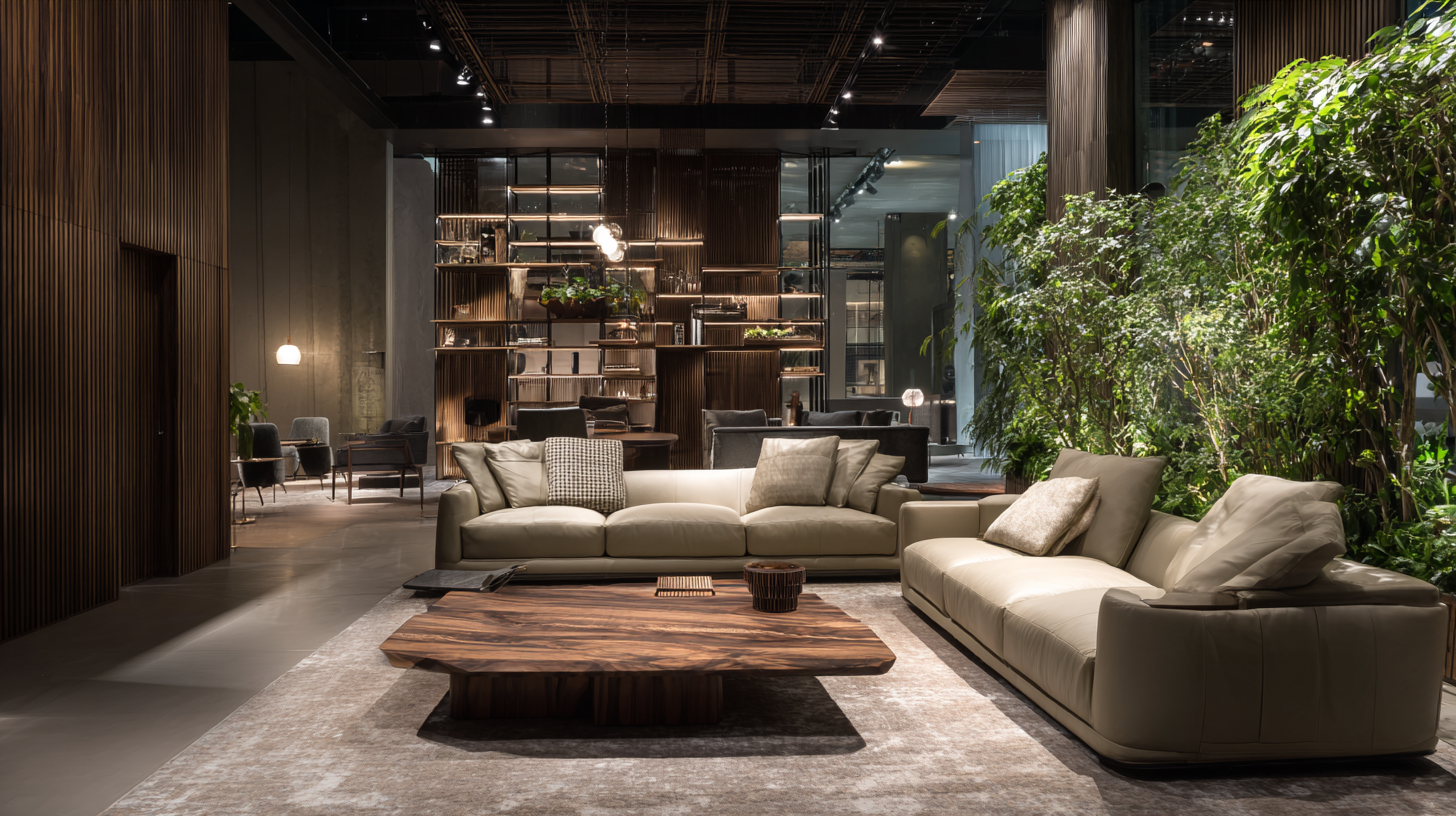Challenges in Choosing Best Quality Furniture for Your Home
Choosing the right furniture for your home can be a daunting task, especially given the vast array of options available in today's market. According to a recent study by the Furniture Today, about 70% of consumers consider "Quality Furniture" as a critical factor when making their purchase decisions. This emphasis on quality stems from a growing awareness of how well-crafted furniture can enhance not only the aesthetics of a home but also its overall longevity and functionality. Furthermore, reports indicate that investing in quality pieces can significantly reduce long-term costs, with consumers saving an average of 30% in replacement expenses over a decade. As more homeowners prioritize sustainable living and durability, understanding the challenges of selecting high-quality furnishings becomes essential for creating a comfortable and stylish environment. This ultimate guide aims to navigate these challenges, providing you with valuable insights for making informed decisions in your quest for the best quality furniture.

Challenges in Selecting Top-Quality Furniture: Insights from Industry Trends
Choosing the best quality furniture for your home can often feel overwhelming, especially with the myriad of options available today. As industry trends evolve, consumers face unique challenges in selecting pieces that not only fit their aesthetic but also promise durability and longevity. One major aspect to consider is the material used in production. Opting for solid wood versus particle board can significantly impact both the look and lifespan of your furniture.
When selecting furniture, it’s essential to pay attention to craftsmanship. Check for details like dovetail joints, solid construction, and quality finishes, as these elements reflect the piece's overall durability. Another useful tip is to invest in multi-functional furniture; this caters to both style and practicality, especially in smaller living spaces.
Additionally, keeping an eye on sustainability trends can guide your purchasing decisions. Many consumers now prioritize eco-friendly materials and ethically sourced products, which not only benefit the environment but often ensure higher quality. Remember, choosing the right furniture is a long-term investment, and being informed can make all the difference.
Understanding Material Quality: The Key to Long-Lasting Furniture Solutions
When it comes to selecting high-quality furniture for your home, understanding the material quality is paramount. According to a recent report by the American Home Furnishings Alliance, over 70% of consumers prioritize durability when making their purchase decisions. This emphasizes that material choice not only influences the aesthetic appeal of furniture but also its longevity and functionality. For instance, hardwoods such as oak and maple are not only visually appealing but are also known for their strength and resistance to wear and tear, making them ideal for long-lasting furniture solutions.
Furthermore, a study conducted by Furniture Today highlights that furniture made from engineered wood, while often more affordable, may not provide the same durability or longevity as solid wood options. Engineered wood is less susceptible to warping; however, it tends to have a shorter lifespan compared to high-quality natural materials. Choosing the right materials helps ensure your investment stands the test of time—keeping your home stylish and functional for years to come. By focusing on quality materials, consumers can make informed decisions that lead to sustainable and long-lasting furniture options that enhance their living spaces.
Challenges in Choosing Best Quality Furniture for Your Home
This chart illustrates the average consumer ratings of different materials used in furniture production, highlighting the importance of material quality in selecting durable furniture.
Evaluating Brand Reputation: How Chinese Manufacturers Lead the Global Market
When it comes to finding the best quality furniture for your home, evaluating brand reputation is crucial, particularly in a market where Chinese manufacturers have established a significant presence. Over the past few decades, China has leveraged its production capabilities, economy of scale, and innovation to dominate the global furniture market. This rise in prominence has been driven by a commitment to both quality and affordability, making it an attractive option for consumers worldwide.
Chinese manufacturers have not only focused on mass production but also on cultivating a brand reputation centered around design and sustainability. Many factories are adopting advanced technologies and eco-friendly materials, which resonate with a growing consumer preference for responsible purchasing. By emphasizing transparency in their operations and investing in quality control measures, these companies are able to enhance their credibility and assure customers of the durability and safety of their products. As a result, buyers are more inclined to choose furniture from reputable Chinese brands, recognizing them as serious contenders in the global market. This evolution in brand reputation ultimately shapes consumer trust and influences purchasing decisions, making it an essential consideration for anyone looking to furnish their home effectively.
Challenges in Choosing Best Quality Furniture for Your Home - Evaluating Brand Reputation: How Chinese Manufacturers Lead the Global Market
| Quality Factor | Brand Reputation | Price Range (USD) | Material Type | Durability (Years) |
|---|---|---|---|---|
| Design & Style | High Recognition | 500 - 2000 | Wood, Fabric | 10 - 20 |
| Comfort Level | Medium Recognition | 300 - 1500 | Leather, Metal | 5 - 15 |
| Craftsmanship | Emerging Brand | 200 - 1000 | Composite, Wood | 2 - 10 |
| Sustainability | Established Brand | 700 - 3000 | Bamboo, Recycled | 15 - 25 |
Cost vs. Quality: The Price Paradox in Furniture Selection
When it comes to furnishing our homes, the dilemma of cost versus quality often leads to a price paradox that can be quite perplexing. According to a report from the Joint Center for Housing Studies of Harvard University, 61% of homeowners prioritize quality over price when selecting furniture. However, the upfront costs of high-quality pieces can be daunting, with premium furniture often ranging from 20% to 40% more than mass-produced alternatives. This often leads buyers to compromise on quality, opting for cheaper options that may wear out faster and require replacement, ultimately costing more in the long run.

Additionally, the American Home Furnishings Alliance indicates that consumers who invest in quality furniture typically experience a satisfaction rate as high as 87%, citing durability and style retention as key benefits. While the initial investment might seem higher, quality furniture comes with warranties and promises of craftsmanship that can deliver comfort and longevity. This makes a compelling case for emphasizing quality in purchasing decisions, as it not only enhances your home's aesthetic but also proves to be more economical over time. Thus, finding the right balance between cost and quality requires careful consideration of both immediate expenses and long-term value.
Sustainability in Furniture Manufacturing: Trends and Consumer Preferences
In recent years, sustainability has emerged as a crucial factor influencing consumer preferences in the furniture industry. As more people become environmentally conscious, the demand for sustainable furniture has surged, prompting manufacturers to rethink their production processes. Sustainable furniture not only considers the materials used—such as reclaimed wood or recycled metals—but also emphasizes the entire lifecycle of the product, from sourcing to disposal. Consumers are increasingly seeking certifications that verify a product's eco-friendliness, reflecting a broader trend towards responsible consumption.

Additionally, the aesthetics of sustainable furniture are evolving, making it more appealing to a wider audience. Modern designs that incorporate eco-friendly materials do not sacrifice style for sustainability. Many consumers now view sustainable furniture as an investment in quality, recognizing that durable products reduce the need for frequent replacements, which is advantageous for both the wallet and the planet. As technology advances, manufacturers are also innovating, providing customizable options that align with personal values while offering a unique touch to home decor. This shift marks a significant change in the furniture landscape, where sustainability and design go hand in hand, reshaping how we furnish our living spaces.

 Catalog
Catalog Replacement Cushions
Replacement Cushions New Jersey Catalog
New Jersey Catalog